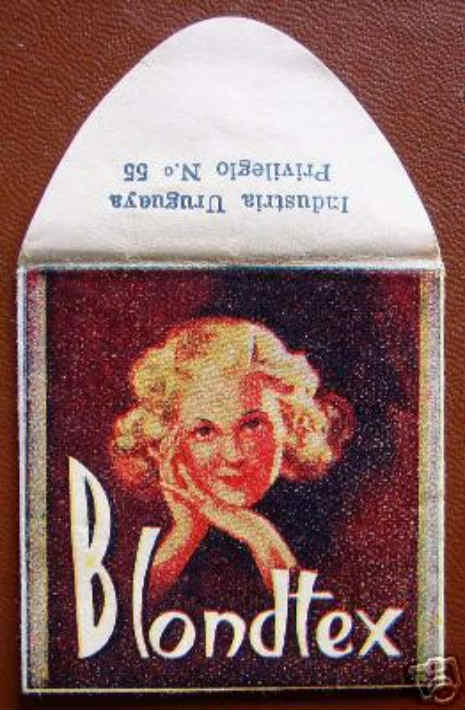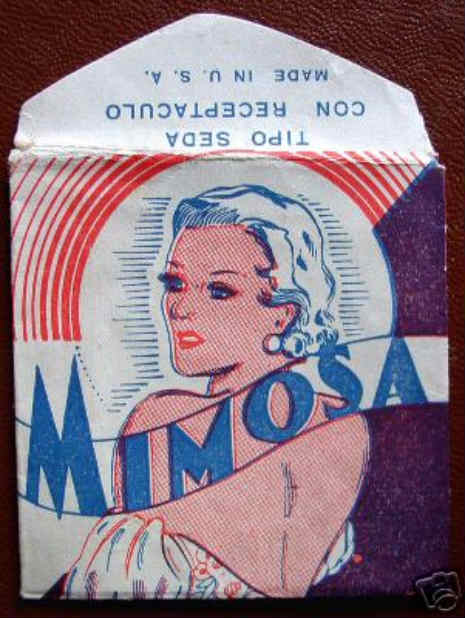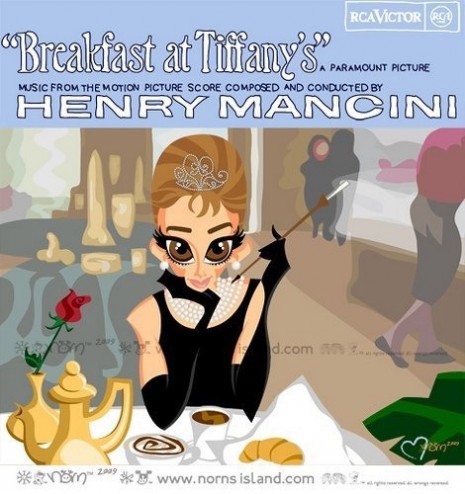
Hand screen-printed “Royal Wedding Sick Bags” by British artist Lydia Leith. Obviously the first batch is already sold out, but you can e-mail Lydia about them here. Each vomit bag sells for £3.00.

(via Nerdcore)

Hand screen-printed “Royal Wedding Sick Bags” by British artist Lydia Leith. Obviously the first batch is already sold out, but you can e-mail Lydia about them here. Each vomit bag sells for £3.00.

(via Nerdcore)

Thanks to Das Kraftfuttermischwerk for making this awesome animated GIF.

There’s a transcript of a speech that Bill Moyers gave in January to History Makers, an organization of broadcasters and producers who make factual programs, posted at Alternet. It’s a very interesting talk, but ultimately depressing. He cites an July 2010 article from the Boston Globe that sets the tone for his remarks and I’d imagine that most of the people listening to what the saintly Texan had to say that day had the same thought “Wow, that sucks.” It’s certainly what went through my mind as I read it. Quoting Moyers:
As Joe Keohane reported last year in The Boston Globe, political scientists have begun to discover a human tendency “deeply discouraging to anyone with faith in the power of information.” He was reporting on research at the University of Michigan, which found that when misinformed people, particularly political partisans, were exposed to corrected facts in new stories, they rarely changed their minds. In fact, they often became even more strongly set in their beliefs. Facts were not curing misinformation. “Like an underpowered antibiotic, facts could actually make misinformation even stronger.”
I won’t spoil it for you by a lengthy summary here. Suffice it to say that, while “most of us like to believe that our opinions have been formed over time by careful, rational consideration of facts and ideas and that the decisions based on those opinions, therefore, have the ring of soundness and intelligence,” the research found that actually “we often base our opinions on our beliefs ... and rather than facts driving beliefs, our beliefs can dictate the facts we chose to accept. They can cause us to twist facts so they fit better with our preconceived notions.”
These studies help to explain why America seems more and more unable to deal with reality. So many people inhabit a closed belief system on whose door they have hung the “Do Not Disturb” sign, that they pick and choose only those facts that will serve as building blocks for walling them off from uncomfortable truths. Any journalist whose reporting threatens that belief system gets sliced and diced by its apologists and polemicists (say, the fabulists at Fox News, Rush Limbaugh and the yahoos of talk radio.) Remember when Limbaugh, for one, took journalists on for their reporting about torture at Abu Ghraib? He attempted to dismiss the cruelty inflicted on their captives by American soldiers as a little necessary “sport” for soldiers under stress, saying on air: “This is no different than what happens at the Skull and Bones initiation ... you [ever] heard of need to blow some steam off?” As so often happens, the Limbaugh line became a drumbeat in the nether reaches of the right-wing echo chamber. So, it was not surprising that in a nationwide survey conducted by The Chicago Tribune on First Amendment issues, half of the respondents said there should be some kind of press restraint on reporting about the prison abuse. According to Charles Madigan, the editor of the Tribune’s Perspective section, 50 or 60 percent of the respondents said they “would embrace government controls of some kind on free speech, particularly when it has sexual content or is heard as unpatriotic.”
No wonder many people still believe Obama was born in Kenya, not Hawaii, as his birth certificate shows; or that he is a Muslim, when in fact he is a Christian; or that he is a socialist when day by day he shows an eager solicitude for corporate capitalism. Partisans in particular - and the audiences for Murdoch’s Fox News and talk radio - are particularly susceptible to such scurrilous disinformation. In a Harris survey last spring, 67 percent of Republicans said Obama is a socialist; 57 percent believed him to be a Muslim; 45 percent refused to believe he was born in America; and 24 percent said he “may be the antichrist.”
What’s even worse is that the most misinformed people (the most gullible, the most fanatical, perhaps) are the ones who vote the most reliably. The Creationists. The people making $40,000 a year who support tax cuts for billionaires to the detriment of their own lives and their kids’ schools. People with no healthcare who protest against it at Tea-party rallies. An entire voting bloc of people who do not believe in what others would deem objective reality. THAT, dear readers, is at base, what we are dealing with in America today and it’s a problem that’s here to stay. You might say it’s the red, white and blue brontosaurus in the room that no one wants to talk about: The willful ignorance of America’s right.
The Boston Globe article that Bill Moyers cites, Joe Keohane’s “How facts backfire: Researchers discover a surprising threat to democracy: our brains” is an absolute must-read. I’m surprised that there wasn’t a bigger fuss made of this information by the liberal media when it was published last year. Here’s a link to the entire article, and some highlights:
This bodes ill for a democracy, because most voters — the people making decisions about how the country runs — aren’t blank slates. They already have beliefs, and a set of facts lodged in their minds. The problem is that sometimes the things they think they know are objectively, provably false. And in the presence of the correct information, such people react very, very differently than the merely uninformed. Instead of changing their minds to reflect the correct information, they can entrench themselves even deeper.
“The general idea is that it’s absolutely threatening to admit you’re wrong,” says political scientist Brendan Nyhan, the lead researcher on the Michigan study. The phenomenon — known as “backfire” — is “a natural defense mechanism to avoid that cognitive dissonance.”
These findings open a long-running argument about the political ignorance of American citizens to broader questions about the interplay between the nature of human intelligence and our democratic ideals. Most of us like to believe that our opinions have been formed over time by careful, rational consideration of facts and ideas, and that the decisions based on those opinions, therefore, have the ring of soundness and intelligence. In reality, we often base our opinions on our beliefs, which can have an uneasy relationship with facts. And rather than facts driving beliefs, our beliefs can dictate the facts we chose to accept. They can cause us to twist facts so they fit better with our preconceived notions. Worst of all, they can lead us to uncritically accept bad information just because it reinforces our beliefs. This reinforcement makes us more confident we’re right, and even less likely to listen to any new information. And then we vote.
Yup. And then we vote. Yikes!
Here’s another passage from the article that will wipe that smirk off your Blue State face:
“Area Man Passionate Defender Of What He Imagines Constitution To Be,” read a recent Onion headline. Like the best satire, this nasty little gem elicits a laugh, which is then promptly muffled by the queasy feeling of recognition. The last five decades of political science have definitively established that most modern-day Americans lack even a basic understanding of how their country works. In 1996, Princeton University’s Larry M. Bartels argued, “the political ignorance of the American voter is one of the best documented data in political science.”
On its own, this might not be a problem: People ignorant of the facts could simply choose not to vote. But instead, it appears that misinformed people often have some of the strongest political opinions. A striking recent example was a study done in the year 2000, led by James Kuklinski of the University of Illinois at Urbana-Champaign. He led an influential experiment in which more than 1,000 Illinois residents were asked questions about welfare — the percentage of the federal budget spent on welfare, the number of people enrolled in the program, the percentage of enrollees who are black, and the average payout. More than half indicated that they were confident that their answers were correct — but in fact only 3 percent of the people got more than half of the questions right. Perhaps more disturbingly, the ones who were the most confident they were right were by and large the ones who knew the least about the topic. (Most of these participants expressed views that suggested a strong antiwelfare bias.)
Studies by other researchers have observed similar phenomena when addressing education, health care reform, immigration, affirmative action, gun control, and other issues that tend to attract strong partisan opinion. Kuklinski calls this sort of response the “I know I’m right” syndrome, and considers it a “potentially formidable problem” in a democratic system. “It implies not only that most people will resist correcting their factual beliefs,” he wrote, “but also that the very people who most need to correct them will be least likely to do so.”
The persistence of these political misperceptions is perplexing, but can be summed up as “Americans, but lets get real for a second, especially those who have a tendency towards “conservative” opinions, will only listen to you if you are saying something that sounds like something they already believe.” (No, I don’t think that all progressives are open-minded, but xenophobia, homophobia, Islamaphobia, racism, being anti-science and a general “fear of the other,” are not exactly hallmarks of the “liberal” personality the way they tend to be on the right. You’d have to be Andrew Brietbart to “believe” otherwise).
What’s worse is that when someone is feeling threatened or is economically insecure, the mind closes down even more. That’s how demagoguery works. It might explain why some dumb old white people think Glenn Beck is so wonderful. It might also explain his success as a pitchman for gold coins during his program. The more threatened someone feels, the easier they fall in line, and the less likely they are to dissent from the party line when it comes to “taking back the country” from a socialist Kenyan. Fear and gullibility go hand in hand, as we see daily.
But these are the dummies, we’re talking about, right? The ignorant people. Not so fast, smartass, because researchers at Stony Brook University found that the people who were the most politically sophisticated thinkers were even less open to “new” (which is to say a fact) information that challenged their belief systems, than the statistically ignorant! Quoting again from Joe Keohane’s article: “These people may be factually right about 90 percent of things, but their confidence makes it nearly impossible to correct the 10 percent on which they’re totally wrong. Taber and Lodge found this alarming, because engaged, sophisticated thinkers are “the very folks on whom democratic theory relies most heavily.”
How facts backfire: Researchers discover a surprising threat to democracy: our brains (Boston Globe)
Thank you Steven Otero!

I have to admit the designs on these vintage paper-based condom envelopes are far cooler than Crown Jewels’ Prince William and Catherine Middleton condoms. ‘Nuff said.

More images after the jump…

Modern Masters was a 4-part BBC Arts series first shown in 2010. In each program, Daily Telegraph art critic, Alastair Sooke examined the lives and work of one of the 20th century’s most important artists, Henri Matisse; Pablo Picasso; Salvador Dali and Andy Warhol.
Sooke set out to discover “why these artists are considered so great and how they still influence our lives today,” not exactly an original approach, but hey, it’s the BBC. The series kicked-off with his documentary on Andy Warhol, “the king of Pop Art”, which certainly had great access, and some very fine archive, and while I’m sure Mr. Warhol would have loved it, it is all a bit hit-and-miss and depends on how well you take to Sooke’s approach as a presenter. Andrew Billen in the London Times wrote of the program:
The Warhol era seems so distant that it was a happy surprise that in New York Sooke found so many of Warhol’s contemporaries to interview. In the Serendipity coffee shop where Warhol sold his first paintings, its owner recalled that his favourite drink was frozen ice chocolate and lemon ice box pie (I think he said it was a drink). The nice couple who employed him to design the logo for their leather business said that he always came with five new ideas for marketing campaigns and if they didn’t like them he would come back next day with another they did. Gerard Malagna, master of the Warhol silk screen, Warholed Sooke’s face into a screen print. Sooke said that he looked like a mouse with lipstick. Malagna agreed: it was just so perfect. Sooke even got an audience with a still well Dennis Hopper. Duchamp had said that the artist would end up just pointing his finger and declaring something art. Warhol pointed his finger at us, said Hopper.
Sooke’s answers to his question “What had Warhol ever done for us?” — predicted celebrity culture, found beauty in banality, toppled the idea of the artist as suffering mystic — were less interesting than his tiggerish approach and his willingness to follow Warhol into absurdity. A stylist apparently called Brix Smith-Start, herself a ringer for Warhol, dressed Sooke in an “Andy-suit” and wig. “Gee Brix! Golly!” exclaimed Sooke, pouting into a cheval. “Yes! You’ve so got it,” gasped Brix. And so he had: the whole thing.
The rest of ‘Modern Masters: Andy Warhol’, after the jump…
With thanks to Douglas Steindorff

Some of my most vivid childhood memories revolved around the films of Herschell Gordon Lewis and his production partner David F. Friedman. Blood Feast, Two Thousand Maniacs! and Color Me Blood Red were taboo pleasures for a kid entering his teens. I grew up in the American south and exploitation flicks were standard fare at the sleazepit movie theaters in Norfolk, Virginia near where I lived. I was a connoisseur at an early age of the high brow horror of Hammer films but took particular delight in the blood-soaked thrills of Lewis and Friedman’s joint venture Box Office Spectaculars.
It all started with Blood Feast. In 1963 Feast for me was the kind of jaw-dropping experience that up until then had only been rivaled by the gory centerfolds of the National Enquirer, nudist magazines and Tijuana bibles. These were sights not intended for the eyes of innocent youth. But, by the age of 12, my innocence had long been pummeled into oblivion by my strong left hand. Lewis and Friedman had tapped into something that psychiatrists are still grappling with: the thin line between sex and violence. I was too young to get any tongue but not too young to watch young women having their tongues ripped out. I blame the movies for much of what made me into the sick fuck I am today.
My buddy Leo and I would scour the movie section of the local newspaper every weekend hoping and praying to see the Box Office Spectacular name attached to any new releases. If we scored, we’d take the 20 mile ride by bus into Norfolk and, along with a handful of sailors on weekend leave, watch the latest B.O.S. bloodbath. A matinee was fifty cents back then and a flick like Blood Feast delivered tremendous bang for half a buck. Short on narrative and plot, but long on explicit scenes of over-the-top gore, David F. Friedman knew exactly what his audience came for. Somewhere in Baltimore, John Waters was transfixed by the same blood red thrills as Leo and me. And later a film geek in L.A. by the name of Quentin Tarantino would discover a battered video of Color Me Blood Red, a tale of blood, guts and fine art, on a dusty shelf somewhere and feel a tingling sensation in his scrotum that later translated into a creative act.
In many ways, I credit Friedman for creating the D.I.Y. in-your-face energy that would later manifest in punk rock.
I’m not here to write an obituary or bio of David F. Friedman. There are and will be plenty on the Internet. I just wanted to share a few personal memories of seeing his films. The Deuce has a detailed bio on Friedman here. Also, Friedman wrote a wonderfully entertaining autobiography A Youth in Babylon: Confessions of a Trash-Film King . It’s out-of-print but Amazon has some reasonably priced used copies you can snag here.
The best way to honor Mr. Friedman is to share one of his Dixiefied gore classics with you. Two Thousand Maniacs! sent me stumbling out of the theater in 1964 with something resembling a religious experience. In its depiction of backwoods psychopaths in a frenzy of bloodlust it not only freaked me out for the obvious reasons, it touched a deeper nerve. I was beginning to wise up to the mob mentality that existed among the various factions in my school and neighborhood, the kind of group psychosis that lead men into wars like Vietnam. I was just a kid but I was already developing a distaste for the kind of cruelty people bestow upon outsiders and things they don’t understand and the glee in which they often display in treating the “other” with harsh injustice.
I may be giving David F. Friedman and Herschell Gordon Lewis credit for a political/sociological subtext in Two Thousand Maniacs! they never intended. But intentional or not, I think these two film makers were tapping into something in themselves that like all art, dreams and fairytales delve into universal truths. Two Thousand Maniacs! in its own bizarro way is a commentary on and critique of the conformity and narrow mindedness of the 1950s. Were the kings of trash cinema anarchists in disguise? Is Two Thousand Maniacs! a radical anti-war film? Or a situationist act of subversion that eviscerates the white supremacism that still prevailed in the American south in 1964—the year of its release and the year in which George Wallace ran for President?
Two Thousand Maniacs! in all its gory glory.

In the first part of this on going series, I explained what a netlabel is, and gave some background on the set up of our own netlabel, Little Rock Records. For the second part I have decided to cover the daddy of them all, the netlabel that inspired me to start up my own, Leipzig’s digital reggae/free download heroes Jahtari.
It was after being shown the Jahtari.org website back in 2006 by my friends in Mungo’s Hi-Fi that the penny dropped - I really could do everything needed to get music out there without the aid of another label. All I needed was someone who could build me a website where I could host music for people to download. The concept of net labels had been floating around before, but nobody had done it as well as Jahtari, with such a coherent outlook and music policy. They took it to another level.

Mikey Murka “Sensi Addict” JTR NET 08
As the name would suggest, Jahtari is a combination of old school computing and dub/reggae. In particular, the classic King Jammy/Wayne Smith-style digital reggae sounds of the mid-80s (records like “Sleng Teng” and “Walk Like Granny”), largely made on Casio keyboards, but here compressed even lower into 8-bit jams. The design is classic reggae styles, refracted through an 8-bit prism, and combined with a love of arcade games like Kong. Most importantly for me was the format - “Net 7s”, a free download which comes packaged like a physical 7 inch record, with an A side and a B side (often a dub version), and corresponding inlay sticker art. When I first encountered Jahtari in early 2007, they already had a large catalog of free releases available, releases I plundered greedily. Yes, there is a slight tongue-in-cheek vibe about the label’s presentation - which is not out of place considering that this is reggae made by a bunch of white Germans - but the music is as high quality an hommage to digital-dancehall as you will find anywhere in the world.

Disrupt “Arcade Addict” JTR NET 08
Jahtari was founded in 2004 by Jan Gleichmar, who records as Disrupt, and who provides the backbone of the Jahtari catalog. Apart from Jan (who has worked with some seriously talented MCs like Mikey Murka, Solo Banton, El Fata and Soom T) the artists’ roster also includes Bo Marley, Dubmood, Roots Ista Posse and the Jahtari Riddim Force. The label doesn’t just deal in free downloads, having expanded into vinyl, tapes and CDs over the years, and now has a 7inch (physical) offshoot label called Maffi. Well, you gotta earn a crust.
There are 20 net 7s and 10 net EPs you can download for free from the website www.jahtari.org, and it all comes highly recommended. If you like the sounds of the Mikey Murka vocal / Disrupt dub tracks in this post, you will like the rest of the catalog, so my advice is just to jump over to their website now and get downloading.
But if you want to hear more music first, there’s more after the jump…

Norn Cutson is an artist based in New York. His work is beautiful and joyous, and always makes me smile. And that’s probably his intention for he describes himself as “an illustrator in NYC bringin’ lots o’ warmth & humor to the world!”
Most likely, you’ll have seen his fabulous illustrations of singers, actresses and pop stars in magazines, on posters, or in his wonderful art book Record Collection, which tells the story of his life through the music he loves.
The novelist Lawrence Durrell once wrote “Music is only love looking for words.” In Norn’s case “Music is only love looking for pictures.”
In Record Collection Norn has re-interpreted the album covers of the music that has been central to his life - from Blondie and Throbbing Gristle to Yoko Ono and Dionne Warwick. Music has always been important to Norn, as he explained to Dangerous Minds.
‘Music was a huge thing for us growing up. My parents love music and they had big record collections; my Dad’s a lot of Martin Denny, Herb Apert, Jackie Gleason and some classical pretensions; Mom’s lots of musicals, soundtracks & pop. My sister & I quickly learned that you could control the mood of the house by choosing the right music.’
It is said, “Artists are born not made,” which is true of Norn, for as far back as he can remember he has been drawing.
‘Before I could even sit up by myself, my Mom would guide my hand with a crayon, making shapes on paper. As I got older, we would play a game transforming the shapes into animals. So I’ve really been drawing all my life.’
From crayon animals, he started copying the Funnies.
‘I remember at 5 years old locking myself in my room and teaching myself to draw Charles Schulz’ Peanuts characters, because I wanted to tell my own stories with them. You can still totally see that influence in my art.
‘I’m always drawing. Even when I am not physically drawing, I am still working things out. I have more images in my mind than I will ever have time to bring into physical reality.
‘Art is Alchemy. It’s all about snatching the image out of the ether, solidifying it in your mind, forcing the image out of your shoulder, down your arm and out of the body onto paper, so the rest of the world can see.’
His book Record Collection is a wonderful treat, a brilliant collection of pop history that synthesizes Norn’s life thru music and art.
‘My Record Collection series came out of finding a new way to tell my story. I’ve drawn autobiographical comics for decades. I love it, but sometimes when you are using words, there’s too much room for misunderstanding. Plus, I have a tendency to get sappy in my writing.
‘With Record Collection, I can evoke a time & emotion just using imagery, and its better that it’s open for everyone to project their own experience on. Peggy Lee might mean one thing to me, and something totally different for you, but we’ll both have a valid response to her image.
‘One of the things (cartoonist and author) Lynda Barry teaches is to always work in a series; that way, you build momentum from one piece to the next, and before you know it, you’ve got a body of work.
‘Record Collection also came out of that idea. But what would it be a series about?
‘At first, I thought Hindu gods & goddesses, because they would be fun to research & draw; but then I realized, to be authentic, the series had to be something that was meaningful for me, not just something I’d read about. It had to be something that really happened to me.
‘I hadn’t grown up with any religion, so what could I use as symbols that other people could see their own stories in, that was coming from a spiritual place?
‘And then of course, I knew: MUSIC was the belief system we were raised with. And with that, I’ve tapped into a series that can last me the rest of my life.
‘I believe The Goddess sends messages through the shuffle feature of our ipods. She may not be playing what we want to hear, but she’s playing what we *need* to hear. What does this song mean to me now? What did it mean when I first heard it? How does this song apply to my life?
‘Sometimes, you can use music as a time machine to go back in time and fix things, or at least understand them better.’
Volume 2 of Record Collection will be published in March, and then Norn will be working on a book of autobiographical comics. He is also planning another exhibition.
‘I’d like to have another show of my work. Seeing people’s smiles when they look at my art is a wonderful feeling. Nothing makes me happier than knowing there’s a place in the word for my images, and that I have the ability to translate them into a form that other people can see and enjoy. I feel if we have that blessing, its our responsibility to serve it.’
Check out more of Norn’s work here and on his Pinterest page.

More of Norn’s fabulous pics, plus bonus clip, after the jump…

Lemmy guest stars in the video for the Foo Fighters’ new tune “White Limo” produced by Butch Vig.
I’m not a big Foo Fighters fan, but I know fun when I see it. The battered video tape look suits the song which sounds like some dirty ass hardcore thrash from the 80s. Shades of Vig’s early production work with Die Kreuzen. Very cool.
Foo Fighters new album will be released April 12.

Besides, really, what does any of this matter if Armageddon is imminent?
10/13/83 Senate Majority Leader Howard Baker is informed that President Reagan has appointed William Clark – as unqualified for this job as for all his others – to be the new Secretary of the Interior. “You’re kidding,” says Baker. “Now tell me who it really is.”
10/19/83 Asked at a press conference about the safety of the US Marines in Beirut, President Reagan says, “We’re looking at everything that can be done to try and make their position safer. We’re not sitting idly by.”
10/23/83 A truck bomb at the US barracks in Beirut kills 241 Marines.
10/24/83 In the face of political strife on the island of Grenada, White House spokesman Larry Speakes calls press speculation about a US invasion “preposterous.”
10/25/83 Claiming that US medical students there are in grave danger, President Reagan diverts attention from the Beirut fiasco by launching an invasion of Grenada. Lest there be any doubt about Presidential involvement in this decision, photos are released showing a pajama‑clad Reagan – up at 5:15 a.m.! – being briefed on the situation. Curiously, reporters are prevented from covering the invasion.
10/26/83 American students from Grenada kiss the tarmac upon landing in South Carolina. Scoffs school bursar Gary Solin, “Our safety was never in danger. We were used by this government as an excuse to invade Grenada.” President Reagan says US troops “got there just in time” to prevent a Cuban takeover.
11/3/83 President Reagan explains that the military action he ordered in Grenada was not an invasion but was, rather, a “rescue mission.” As for a UN resolution deploring this action, “It didn’t upset my breakfast at all.”
12/3/83 Concrete barricades are erected in front of the White House to prevent truck bombers from cruising in as easily as they seem to in Beirut.
12/6/83 The Israeli newspaper Maariv reports that during a meeting with Prime Minister Yitzhak Shamir, President Reagan – who spent World War II making training films in Hollywood – claimed to have served as a photographer in an army unit filming the horrors of Nazi death camps. Shamir says Reagan also claimed to have saved a copy in case there was ever any question as to whether things had really been so bad. When asked just that question by a family member, Shamir quotes him as saying, “This is the time for which I saved the film, and I showed it to a group of people who couldn’t believe their eyes.”
12/6/83 Revealing his rather disturbing view about the “coming of Armageddon,” President Reagan says, “[Not] until now has there ever been a time in which so many of the prophecies are coming together. There have been times in the past when people thought the end of the world was coming, and so forth, but never anything like this.”
All entries are excerpted from the “Reagan Centennial Edition” of my 1989 book The Clothes Have No Emperor, available here as an enhanced eBook. More to come.